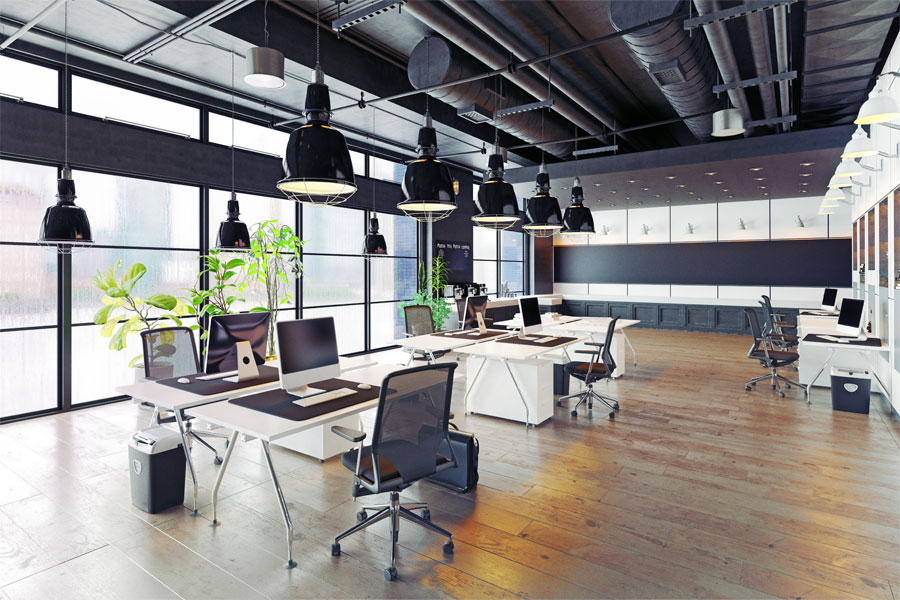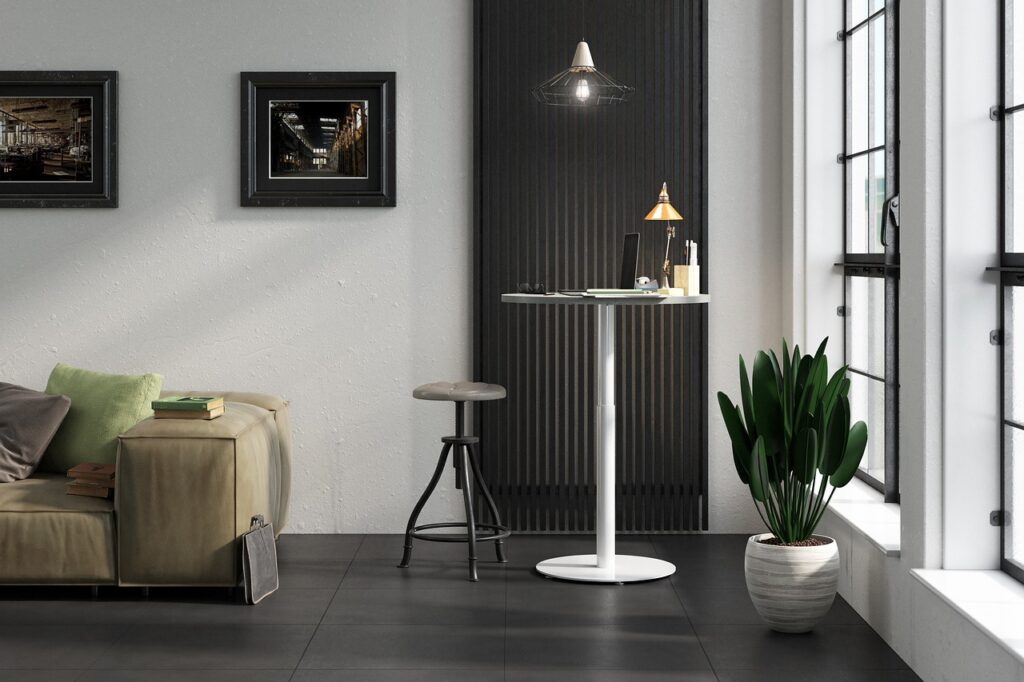In the rapidly evolving landscape of commercial interior design, one trend that stands out is the integration of smart office technology. As businesses in India and across the globe strive to enhance productivity, improve employee well-being, and create sustainable work environments, smart office technology integration is becoming essential. For companies like Airbrick Infra, based in Gurgaon, understanding and implementing these technologies can set them apart in the competitive field of commercial interior design.

What is Smart Office Technology Integration?
Smart office technology integration involves incorporating advanced technological systems and devices into the office environment to create a smarter, more efficient workspace. This includes everything from automated lighting and climate control to sophisticated security systems and integrated communication platforms. The goal is to create a seamless, connected environment that leverages technology to improve the overall functionality and aesthetic of the office.

The Benefits of Smart Office Technology
- Enhanced Productivity:
Smart office technology can significantly boost productivity by automating routine tasks, reducing manual errors, and allowing employees to focus on more critical activities. For example, smart scheduling systems can optimize meeting room usage, while AI-powered assistants manage tasks and reminders. - Improved Employee Well-being:
Integrating smart technology can also enhance the well-being of employees. Automated climate control systems maintain optimal temperature and air quality, while adjustable lighting reduces eye strain and improves mood. Smart furniture, such as height-adjustable desks, promotes better posture and reduces the risk of musculoskeletal issues. - Energy Efficiency and Sustainability:
Smart office technology contributes to a more sustainable office environment. Automated lighting and HVAC systems adjust based on occupancy and natural light levels, reducing energy consumption. Smart sensors monitor energy usage and identify areas for improvement, helping businesses achieve their sustainability goals. - Enhanced Security:
Advanced security systems, including biometric access control, smart surveillance cameras, and integrated alarm systems, provide a higher level of security for office spaces. These technologies offer real-time monitoring and alerts, ensuring that any security breaches are promptly addressed.
Key Trends in Smart Office Technology Integration
- Internet of Things (IoT):
IoT devices are at the forefront of smart office technology. These interconnected devices can communicate with each other and be controlled remotely, offering unparalleled control and automation. From smart thermostats to connected lighting systems, IoT devices create a cohesive and responsive office environment. - Artificial Intelligence (AI):
AI is transforming how offices operate. AI-powered systems analyze data to optimize office layouts, predict maintenance needs, and even assist in decision-making processes. AI-driven chatbots and virtual assistants handle a range of tasks, from customer service to scheduling meetings. - Augmented Reality (AR) and Virtual Reality (VR):
AR and VR technologies are being used to create immersive office experiences. Virtual tours help in showcasing office spaces to potential clients, while AR can be used for office interior design visualization, allowing clients to see how different design elements will look in real-time. - Wireless Charging:
With the increasing use of wireless devices, wireless charging stations are becoming a staple in modern offices. These stations can be integrated into office furniture, providing convenient charging options for employees and reducing cable clutter. - Smart Desks and Furniture:
Smart desks and furniture are designed to enhance comfort and productivity. Features such as adjustable height, built-in charging ports, and integrated wellness reminders are becoming increasingly popular. These pieces of furniture can be customized to meet the specific needs of employees, promoting a healthier work environment.

Practical Applications of Smart Office Technology
- Automated Lighting and Climate Control:
Automated lighting systems can adjust the brightness and color temperature based on the time of day and the amount of natural light available. This not only improves energy efficiency but also enhances the comfort and productivity of employees. Similarly, smart climate control systems maintain optimal temperature and humidity levels, creating a comfortable working environment. - Integrated Communication Platforms:
Smart office technology integration includes advanced communication systems that facilitate seamless collaboration. Unified communication platforms integrate various tools such as video conferencing, instant messaging, and email, allowing employees to communicate and collaborate more effectively. - Smart Meeting Rooms:
Meeting rooms equipped with smart technology can enhance the efficiency of meetings. Features such as automated scheduling, voice-activated controls, and interactive whiteboards streamline the meeting process and improve collaboration. Smart projectors and screens provide high-quality visuals, making presentations more impactful. - Touchless Technology:
In the wake of the COVID-19 pandemic, touchless technology has gained significant importance. Touchless access control systems, voice-activated devices, and gesture-based controls reduce the risk of contamination and create a safer office environment. - Employee Monitoring and Management:
Smart office technology can also be used to monitor and manage employee activities. Sensors track occupancy levels, monitor air quality, and even analyze employee movements to optimize space usage. This data provides valuable insights for improving office layouts and enhancing employee productivity.
Integrating Smart Technology with Office Interior Design
For a seamless integration of smart technology, it is crucial to consider the role of office interior design. The design should complement the technology, creating a harmonious and functional workspace. This involves careful planning and coordination to ensure that the technology enhances rather than disrupts the office environment.

For instance, incorporating smart technology into the design of breakout spaces can create areas where employees can relax and recharge. Smart lighting and climate control systems make these spaces more comfortable, while integrated communication tools allow for spontaneous collaboration.
Similarly, the design of workstations should consider the integration of smart desks and furniture. These elements should be positioned to maximize natural light and promote healthy work habits. Additionally, the layout should facilitate easy access to power sources and wireless charging stations.
By linking smart office technology integration with office interior design, businesses can create a workspace that is not only functional but also aesthetically pleasing. This holistic approach ensures that the technology is seamlessly integrated into the office environment, enhancing both the functionality and the overall design.
Conclusion
Incorporating smart office technology into commercial interior design is no longer a luxury but a necessity. For companies like Airbrick Infra, embracing these technologies can provide a competitive edge in the market. By leveraging smart office technology integration, businesses can create a more productive, sustainable, and secure work environment.
As we move towards a more connected and automated future, the importance of smart office technology will only continue to grow. By staying ahead of the curve and integrating these technologies into their designs, companies can create office spaces that meet the evolving needs of modern businesses.
For more insights and tips on office interior design, explore our latest blog, where we delve deeper into creating functional and aesthetically pleasing office spaces.





